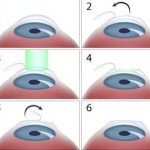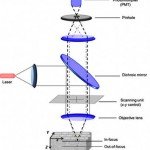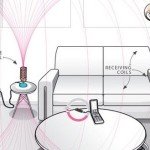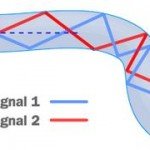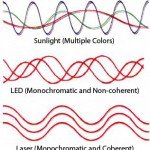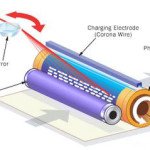Invention that can make object invisible
The first thing for making things invisible is to learn about what causes it visible in the first place. Whenever electromagnetic (EM) emission hits the surface of an object, three things can happen: it can be reflected, refracted or absorbed. Depending on the materials, this creates characteristic habits, noticeable by the human eye (if the radiation is within the visible spectrum), or by various electrical equipment. Basically, for an item to become invisible, the path of these electromagnetic waves must be disrupted between their source and the detector. The easiest way to do this is to stop the reflection of EM radiation completely, absorbing the energy so that it can not be detected. Plasma stealth is a technique currently being developed in order to achieve radar invisibility.
Plasma is a collection of free-flowing ions and electrons; it interacts with electromagnetic emission, absorbing and dissipating the energy from incoming EM waves. If a shroud of plasma could be maintained around a plane, it could be used to soak up incoming radio waves, preventing the aircraft from being detected by radar. Unfortunately, plasma emits a visible glow, which would highlight the plane to onlookers. Light absorption can also be used to make objects invisible to the human eye. For example, NASA has developed a coating made using carbon nanotubes, capable of absorbing 99 per cent of the EM radiation in the ultraviolet, visible, infrared and far-infrared parts of the spectrum. Objects painted with the nanotubes are intensely black, and the technology has significant capabilities for hiding cars in the blackness of space. Unfortunately, most of the time there is enough light that painted objects would be conspicuously dark on Earth. A better method is to use visual camouflage to closely mimic the surrounding.
Using a camera to record the background, in conjunction with a projector to display the images, a version of a Harry Potter-style invisibility cloak is another technology currently under development. Because of its design, at the moment the illusion only succeeds from one point of view. The projected visual must strike the cloak head-on, and must reflect directly back into the eyes of the viewers, as though it were coming from the background itself. This is accomplished using beads of retroreflective material. Normally, rough surfaces scatter light in all directions, while mirror smooth surfaces reflect it back at an angle, but the beads behave in a different way.
They act as tiny prisms, bending the light as it enters and reflecting it back in exactly the same direction that it came in. Despite its imperfections, the technology does have other potential applications, including making it possible for pilots to see through the floor of their aircraft – which would be very helpful when coming in to land. The most promising invisibility cloaks actually bend light, stopping it from hitting the concealed object at all. Every material has an index of refraction – a number that represents the speed of light travelling through the material, relative to the speed of light in a vacuum. Organic materials, including air and water, all have a positive refractive index; that is, light travels more slowly through them than it does through a vacuum. As light passes from one material to another, a change in refractive index causes it to alter direction. If the refractive index changes abruptly – for example, as light passes from water to air – the light is refracted and changes direction. If the refractive index changes more gradually, the light bends in a curve. This is not so unusual as it sounds.
In a desert, the scorching sand heats the air near to the ground, creating a temperature gradient, which in turn creates a gradient in the refractive index of the air. As light passes through this gradient, it bends upwards, creating the illusion that a wet puddle of sky is in the ground. By simulating the circumstances that create such a mirage, it is possible to hide objects by bending light away from them. Carbon nanotubes are single-thickness tubes of graphene and one of a host of cutting-edge smart materials.
They are highly conductible and can be heated and cooled quickly. If a sheet of these nanotubes is heated in water using an electrical current, it is doable to mimic the effect of a mirage in the desert. As the current passes through the sheet, the water near to it is heated too, so the light bends, making it disappear completely. However, despite being impressive to watch, this technique only works under water so far. Using the mirage phenomenon for invisibility has its restrictions, but specially designed materials allow electromagnetic radiation to be bent in a more controlled way.
Metamaterials have a negative refractive index, which makes them effective at bending EM radiation. Using a ring constructed from lattice-shaped metamaterials, microwaves can be bent around a small object, making it invisible. In order for this to work, the wavefront must look exactly the same when it enters the cloak as when it leaves. However, curving EM radiation over the object means different waves must travel different distances to get through. If the wave travelling the shortest distance is moving at the speed of light, then the other waves must be moving faster. Interestingly, this is not against the laws of physics, which state that information cannot be carried faster than the speed of light.
As long as only a single wavelength is moving through the cloak, no new information is being transmitted, so the waves can move at different speeds and then converge at the other end. This makes converting the technology to the visible spectrum much more challenging. A cloak with the capacity of bending just one wavelength would mean that only a single shade of a particular colour would be invisible to the eye. Even if it were achievable to bend all wavelengths in the electromagnetic spectrum at once, this would mean that no light could enter the center of the cloak, so although you might be invisible, you would not be able to see out either. However, invisibility technological innovation has excellent potential for use in other areas, from hiding fighter jets to making inner organs seethrough during surgeries.






